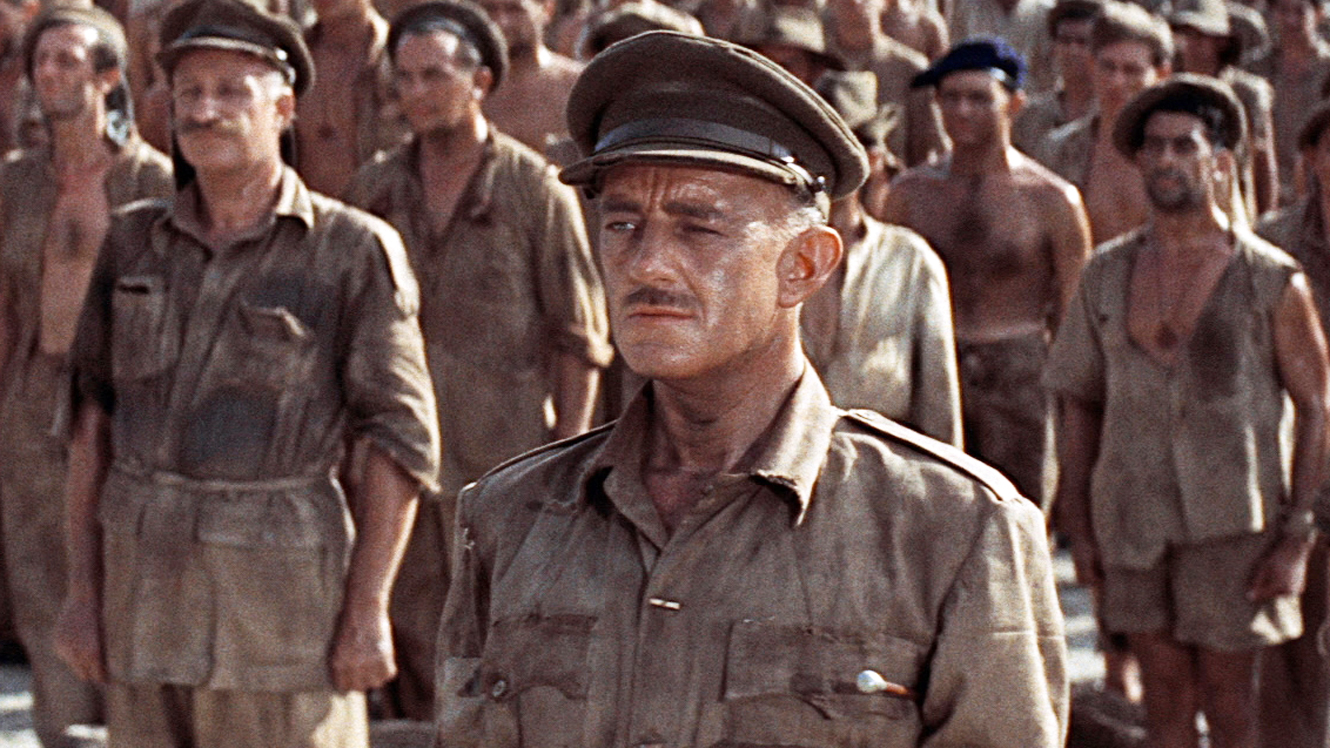Review: The Bridge on the River Kwai (1957)
Appropriately enough, The Bridge on the River Kwai exhibits the sometimes slow yet relentless linear momentum of a train on a railway line. After yet another year full of bloated blockbusters with convoluted plots difficult to recall with any exactness, Kwai stands as an exemplar of big, accessible film entertainment featuring clear, involving, and insightful storytelling.
The Bridge on the River Kwai tells the story of British POWs labouring in a Japanese internment camp. Their task, as the title indicates, is to build a bridge over the Kwai in order to connect the Japanese-planned Burma Railway running from Bangkok to Rangoon. Upon the British arrival in the camp, Lieutenant Colonel Nicholson (Alec Guinness) engages in a battle of wills with the Japanese commander, Colonel Saito (Sessue Hayakawa), over the legality of officers being forced to work. While this violation of the Geneva Convention is happening all along the rail line, Nicholson considers it a matter of principle to protest it. As he says, it is principle that will keep his men soldiers and not slaves. Nicholson describes his efforts as a battle to preserve civilization in the jungle, but his principle is also a product of his own obsessive personality.
Guinness’s Nicholson is an intense example of the “by the book” type, and his British rigidity is nicely set alongside the hyper concern for “face” of the Japanese, and Saito in particular. The comparison between Nicholson and Saito is by no means subtle, but it exhibits a depth of meaning. While Nicholson’s battle of will with Saito is compelling, and his resistance admirable (Nicholson is forced to endure a hot box in the jungle heat for weeks), the film is also satirizing both cultures’ obsessions with order and their presumptions about “the way things are done.” Saito has no respect for the British who have surrendered, and Nicholson has intense pride even in his defeat. I would argue that the viewer is not meant to entirely identify with the British in the film, and this is effected through the character of Commander Shears (William Holden), a cynical American POW who thinks both commanders are full of it.
Shears provides a cynical foil to Nicholson’s stern fidelity to law. He also generates the second plotline that develops over the course of the movie. Shears escapes, finds his way back to Allied Forces, believes he can get out of the war on medical leave, but is then cornered into returning on a mission to blow up the bridge with a special forces unit. Shears’ plotline doesn’t break the clear progression of the narrative, but rather generates a second storyline that branches off and runs parallel alongside the first until the inevitable climax that brings the storylines together in a spectacular, and justifiably famous, sequence.
If you don’t know how this classic ends, I won’t spoil the show, but even if you do or have an inkling, you will still be wowed. It’s a sequence that generates a lot of suspense, for how all the narrative threads come together, how the events play out, and how the main characters’ motivations are pitted against each other.
The Bridge on the River Kwai is the kind of film that is excellent overall, but is most memorable for a number of scenes. The Nicholson scenes at the beginning are the most famous, and, after the climax, probably the best in the film. Shears’ scenes that develop in the middle are a bit more humorous, and his journey back to the bridge more conventionally adventurous, but Shears’ plotline is still more successful than critics such as Roger Ebert have maintained. Overall, I admire the film’s superior narrative structure, which creates suspense throughout because of its crushing inevitability and the tension of crossed purposes.
10 out of 10
The Bridge on the River Kwai (1957, UK/USA)
Directed by David Lean; screenplay by Carl Foreman and Michael Wilson, based on the novel by Pierre Boulle; starring William Holden, Alec Guinness, Jack Hawkins, Sessue Hayakawa, James Donald, and Geoffrey Horne.
